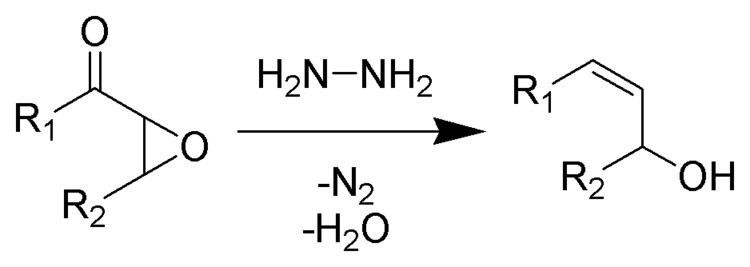 | ||
The Wharton olefin synthesis is a chemical reaction that involves the reduction of α,β-epoxy ketones using hydrazine to give allylic alcohols. This reaction, introduced in 1961 by P. S. Wharton, is an extension of the Wolff–Kishner reduction. The general features of this synthesis are: 1) the epoxidation of α,β-unsaturated ketones is achieved usually in basic conditions using hydrogen peroxide solution in high yield; 2) the epoxy ketone is treated with 2–3 equivalents of a hydrazine hydrate in presence of substoichiometric amounts of acetic acid. This reaction occurs rapidly at room temperature with the evolution of nitrogen and the formation of an allylic alcohol. It can be used to synthesize carenol compounds. The Wharton reaction is the chemical reaction of α,β-epoxy-ketones with hydrazine to give allylic alcohols. Wharton's procedure has been improved.
Contents
Mechanism and scope
The mechanism of the Wharton reaction begins with reaction of the ketone (1) with hydrazine to form a hydrazone (2). Rearrangement of the hydrazone gives intermediate 3, which can decompose giving off nitrogen gas forming the desired product 4. The final decomposition can proceed by an ionic or a radical pathway, depending on reaction temperature, solvent used, and structure of intermediate 3.
The Wharton olefin synthesis allows the transformation of an α,β unsaturated ketone into an allylic alcohol. First, the epoxide is generated by the reaction of peroxide with the alkene. The reaction has two limitations:
Applications
The methodology has been implemented in synthesis of complex molecules:
